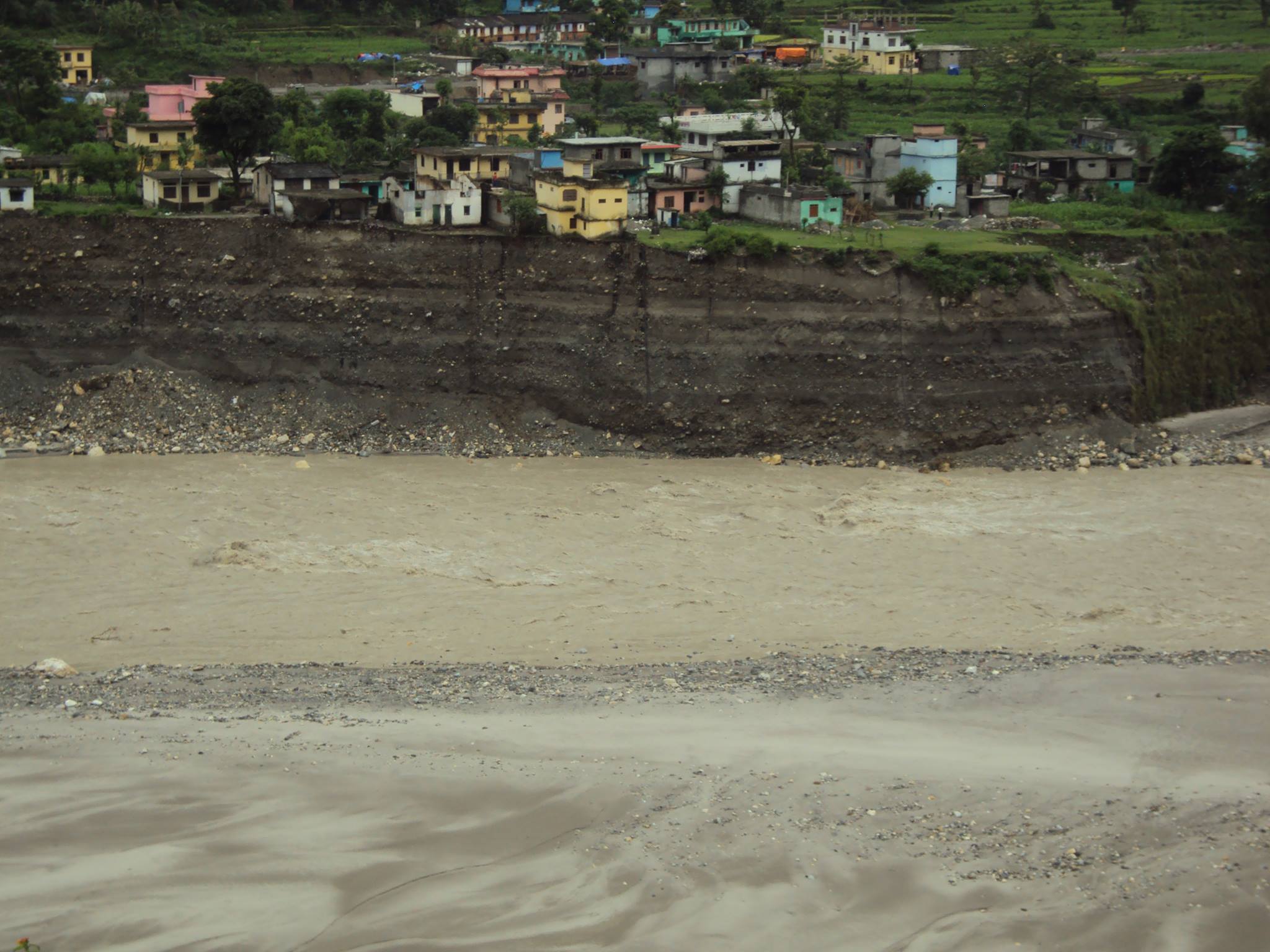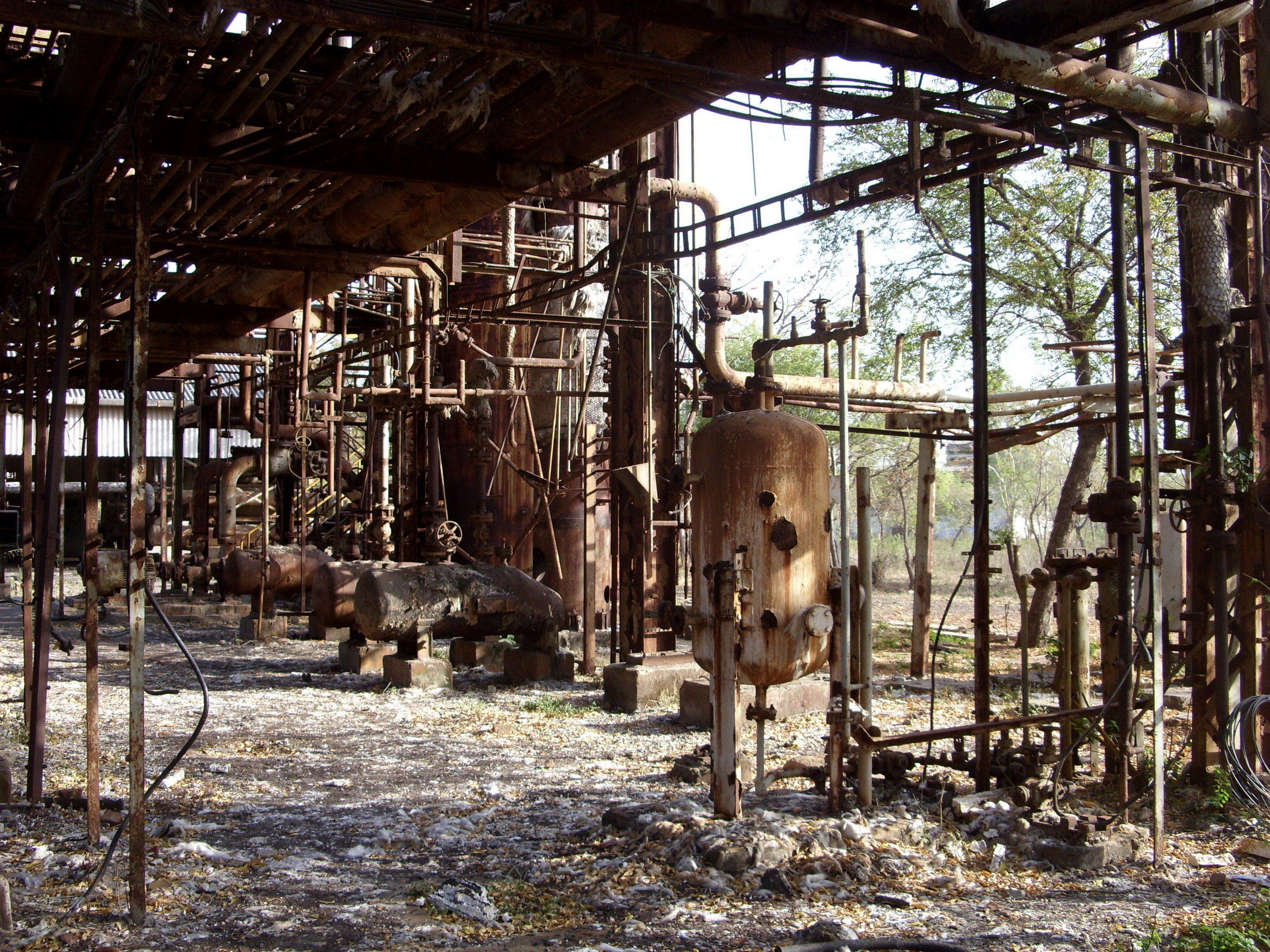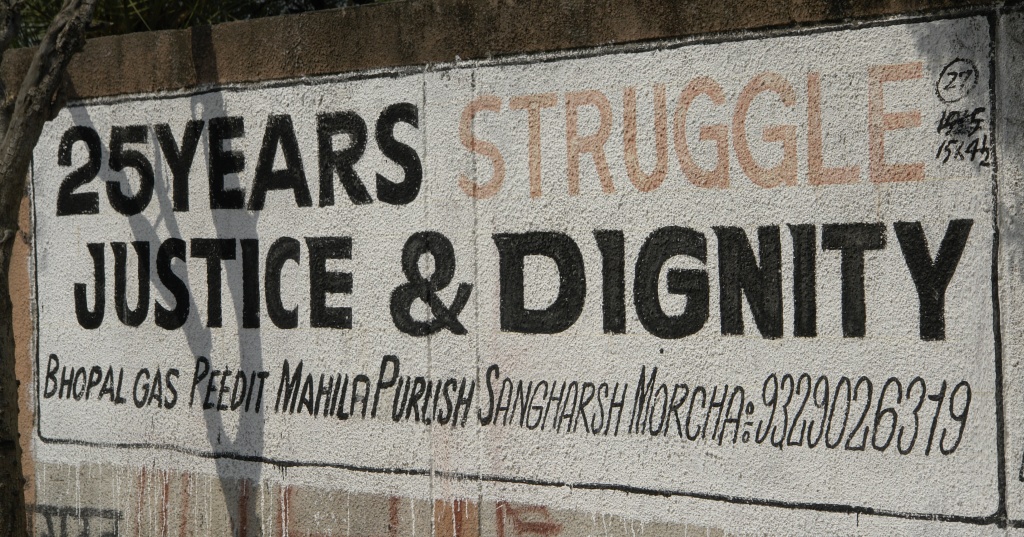This article is written by Suyash Srivastava, on India’s worst man-made disasters or avoidable disasters.
Introduction
Sipping a cup of ‘Tea in the morning’, when you open the daily; somewhere on the front page you notice a news spotlighting about climate change and environment impact. Frequently this negative impact on Earth’s environment turns into a catastrophe. “It’s very distressing to see that humans die due to human induced activities”. As a follow up, few government officials are held responsible for the disaster and an enquiry committee is being set up. Environmentalist and activists vocalize for making stricter laws to stop exploitation of nature. Government takes their irremissible stand and averts the situation by awarding compensation to the victim families. These are obligatory protocols which are followed throughout the world. We run away from taking responsibility and blame nature; calling it as ‘God’s will’. Is it only nature and not us? The fact of the matter is every one of us is responsible for destroying our environment and giving rise to such situations. Earth cannot take more of human exploitation. Since the time of industrial revolution earth’s resources are being exploited like anything[1]! Lot of toxic and human waste is being dumped in our water bodies, fossil fuels are burnt and human garbage is buried inside land. Environment Protection in India and around the world was not taken seriously until recently. A series of man-made disasters have caused us to think over rampant development and exploitation of Earth’s resources. “Nature will treat us the same way we treat her”. Here’s how we’ve been treating nature and how it treats us back!
Bhopal Gas Tragedy
This year marks the 30th Anniversary of Bhopal Disaster victims.[2][3] [4]Imagine waking up in the middle of the night with your eyes and lungs burning. And there is literally no mode of communication and you’ve no idea as to what happened. So what do you do? You start panicking. First thing that comes to the mind is, ‘Pack your bags and ‘run’. But some run in the wrong direction and some don’t even realize they’re supposed to run. As a result over 500,000 people are exposed to Methyl Isocyanate gas and other chemicals.[5] Government records confirm a total of 3,787 deaths.[6] Many other thousands were temporary or permanently injured in the backwash. Forget about responsibility, not even a sense of morality was shown by management of Union Carbide Corporation. They immediately dissociated themselves from taking any responsibility. This was only the beginning of years of legal battle in which ethical implications of the disaster and tragedy victims were largely ignored. Following 3rd December 1984, environmental awareness and activism in India increased significantly. In a settlement mediated by Supreme Court in 1991, UCC accepted moral responsibility.
The site was closed in 1986. Following this Environment Protection Act was passed in 1986, creating Ministry of Environment and Forest which strengthened India’s commitment towards environment. [7]In Dec, 2008 Madhya Pradesh High Court decided that the waste should be incinerated at Ankleshwar in Gujarat. The decision was protested across all India by activists and environmentalists. Finally, on 8th June 2012, Incineration of Toxic Bhopal Waste agreed to pay $4.1 million to dispose of UCIL waste in Germany. [8]
Oleum Gas Leak
Just after Bhopal Gas Leak, M.C. Mehta V Union of India[9] case sprang up. The leakage happened in the heart of capital city. It was due to the aftermath of Oleum gas leak from Shriram Food and Fertilizers Ltd. Complex at Delhi. It created a lot of panic in Delhi when people were only recovering from the shock of Bhopal Disaster only two days go. Shriram Food and Fertilizers was set up in a dingle complex spreading in about 76 acres. Within a radius of 3kms it was thickly surrounded by colonies such as Punjabi Bagh, West Patel Nagar, Ashok Vihar, Karampura, Shastri Nagar and Tri nagar.[10] One person died and several else were injured.[11]
Maharashtra Floods of 2005

Every Mumbaikar remembers the unfortunate day of 26th July when Mumbai came to a ‘standstill’. At least 5,000 people died in the Maharashtra floods of 2005. It occurred just one month after the June 2005 Gujarat floods. [12]The floods were caused due to the eighth heaviest rainfall ever recorded in 24-hours which even continued for the next day. One of the factors aggravating the disaster was Antiquated Drainage System. The present storm-drainage water system in Mumbai was only capable of carrying 25 mm whereas the city received 993mm of total rainfall. Unlike South Mumbai, buildings in Northern Suburb were haphazard and without planning. Mangrove system which existed along Mithi River and Mahim Creek were being destroyed and replaced with construction.[13]Environmentalist and experts claims it to be poor preparedness of government authorities. A lot of illegal construction was done in lower lying areas of Mumbai. Authorities were not trained to deal with such situation. Drainage system was old and blocked with human garbage which caused the mishap.[14]
2010 Ladakh Floods

Flash floods have little to do with geology, and it is because of change in rainfall pattern due to global warming. [15]At least 255 people are reported to have died after a cloudburst and heavy overnight rains triggered flash floods, mudslides and debris flow in Ladakh region. The area is referred to as ‘cold desert’ which receives only 15mm rainfall in August month. On that unfortunate day of 6th August, 2010, the area is said to have received rainfall of at least 150mm and 250mm. More than 71 villages of the Leh were destroyed. People were unaware and totally surprised as the cloudburst happened sometime in night between 0012-0003. Jammu and Kashmir region has seen a lot of climate change in past couple of decades. Summers are more like drought which receives heavy downpour in installments. Which is strange and a matter of concern for our heaven?

Maharashtra drought of 2013
Maharashtra witnessed its worst drought in past 40 years. The rainfall analysis of 2012 to 1972 for the month of June to October reveals that 17 districts that were mentioned as drought affected regions were hit very badly.[16] Indeed rainfall had been one of the contributors of drought. But the major contributory remained bad management of existing water resources, lack of proper policy of water distribution and more distribution of water to industries than to fields.[17]Millions of people were affected as 64 out of 355 were affected by the calamity. People were rendered jobless as their crops were destroyed and their cattle died hungry. It was a total mishap of government policies and environment impact.
North India Floods of 2013

Many scientists says that our world will end either ‘by a lot of water’ or by ‘no water’. Nature is taking revenge by melting glaciers and drowning the world. With so many human induced activities and increasing population, there will be hardly any fresh water left in years to come. The meditation retreat made famous by ‘The Beatles’; Uttarakhand also known as ‘Land Of Gods’ witnessed devastating floods and landslides, also known as 2013 North India Floods. It became the country’s worst natural disaster since 2004 tsunami, with more than 5,700 people presumed dead.[18][19]70,000 people were stranded for days due to destroyed livelihood. Lack of supply of food items, drinking water, transport etc. led to a total cut off of the area from the rest of the country. Majority of the roads disappeared and it took a lot of efforts from Indian Army to conduct search and rescue operations. [20]Environmentalist claims the true cause of tragedy to be damage of ecology. After Uttarakhand became a separate state in 2001[21], it saw a lot of growth in tourism. Many roads, hotels, shops and multistory buildings were constructed along ecologically fragile areas. Nature was exploited in the utmost manner possible. These man-made factors turned an extreme weather into a social catastrophe.[22]
Maline Landslide in Pune
Malin Landslide in Pune killed more than 100 people. The tragedy occurred on 30th July 2014 when landslide struck and wiped out village of Malin. This was the worst landslide of the year after Afghanistan landslide. [23]There are two types of landslides- naturally induced and human induced. The current landside was possibly due to human induced activities like road construction and farming as quoted by geologist Satish Thigale. Reports suggest that there was massive construction, deforestation and farming in the area which caused the landslide.[24][25][26] A Communist Party Of India statement quoted by Business Standard:[27]
“The government had adequate warning in the past few years when smaller landslips had occurred and the flow of the backwaters of the nearby Dimbha Dam was one of the causes. But the government did not take any preventive measures. JCB machine (excavators) were being used on the hillside in the name of developing Adivasi land but (they were being used) in fact to serve the interest of a network of JCB machine owners, corrupt officers and leaders. The use of these heavy machines caused damage to the hillside. In spite of the strong opposition of adivasi to the use of machines, the government did not prohibit their use”.
India-Pakistan floods 2014
Even the recent tragedy in Kashmir valley is being increasingly looked at as a manmade disaster. [28]Jammu and Kashmir witnessed its worst flood in 60 years. Over 0.6 million people were stranded and about 200 were killed.[29] According to Bombay Natural History Society (BNHS) the disaster occurred due to increasing developmental activities and a severe loss of wetland habitat for various commercial activities. BNHS report that Dal Lake has reduced to just about 1200 hectares, which is almost half of its earlier spread. Chandra Bhushan, Deputy Director General of the Centre for Science and Environment quoted that:[30]
“The Kashmir floods are a grim reminder that the climate change is now hitting India harder. In the last 10 years, several extreme rainfall events have rocked the country, and this is the latest calamity in the series.
CSE researchers have compiled the list of such events which include: Mumbai floods of 2005, Leh cloudburst of 2010, Uttarakhand floods of 2014, followed by India-Pakistan floods this year. According to IPCC Assessment report (AR5), floods and droughts are likely to increase in India. India will get more rainfall but lesser number of rainy days. By 2071-2100, intense heavy precipitation over most regions will increase.
Conclusion
These disasters are only a grim reminder that Earth cannot take more of human waste. If we don’t control our activities now, our coming generation in years will get to suffer. India is a still an under developed country which requires a lot of change in its environment laws and policies. India needs to make a stronger stand and give out a firm message at global level. Most of our industries still violate environmental laws and protocols. Our children need to be taught about sustainability and environment protection. A lot of change has taken place in past couple of years, like more and more planting of trees, concept of corporate social responsibility induced amongst companies, installation of garbage bins at many places, wide awareness programs amongst children and other class of people. But there are still millions of people unaware about environment impact and its consequences. A lot has been researched and written in this area. Change is positive and motivating, but it is not enough. Just becoming part of international conferences and protocols won’t bring about a change. Things need to be done at grass root level. “If not so then it will not be soon when human race becomes their own reason of extinction.” We must act soon and we must act now.
LawSikho has created a telegram group for exchanging legal knowledge, referrals and various opportunities. You can click on this link and join:
https://t.me/joinchat/J_
[1] http://www.historyworld.net/wrldhis/PlainTextHistories.asp?ParagraphID=ktt
[2] https://www.ccrhq.org/collaborate/events/30th-anniversary-bhopal-disaster
[3] http://www.bhopal.net/boston-commemorates-30th-anniversary-of-bhopal-gas-disaster-with-vigil-and-chants/
[4] http://www.ibtimes.co.uk/bhopal-disaster-30th-anniversary-facts-about-worlds-worst-industrial-tragedy-1477489
[5] http://www.mgrfoundation.org/UnionCarbideAtBophal.html
[6] http://en.wikipedia.org/wiki/Bhopal_disaster
[7] http://www.ehjournal.net/content/4/1/6
[8] http://en.wikipedia.org/wiki/Bhopal_disaster
[9] 1987AIR1086, 1987SCR(1)819
[10] http://www.legalserviceindia.com/article/l265-M.C.-Mehta-v.-Union-of-India.html
[11] http://en.wikipedia.org/wiki/M._C._Mehta_v._Union_of_India
[12] http://www.ndtv.com/photos/news/26july-2005-the-day-mumbai-stopped-11000
[13] http://en.wikipedia.org/wiki/Maharashtra_floods_of_2005
[14] http://greencleanguide.com/2013/11/18/global-warming-and-its-impacts-on-climate-of-india/
[15] http://www.downtoearth.org.in/content/flash-floods-are-man-made
[16] http://www.thehindu.com/news/national/other-states/maharashtra-drought-manmade-analysis/article4577079.ece
[17] http://www.ibtl.in/news/exclusive/2079/maharashtra-drought-2013/
[18] http://www.disaster-report.com/2013/06/himachal-pradesh-uttarakhand-flood-2013.html
[19] http://en.wikipedia.org/wiki/2013_North_India_floods
[20] http://www.bbc.com/news/world-asia-india-22963870
[21] http://www.euttaranchal.com/uttaranchal/uttaranchal_formation_milestones.php
[22] http://www.theguardian.com/commentisfree/2013/jun/28/india-floods-man-made-disaster
[24] http://www.firstpost.com/india/truth-behind-pune-village-landslide-deforestation-for-a-govt-scheme-1642715.html
[25] http://www.thehindu.com/news/national/other-states/pune-landslide-gsi-team-finds-cracks-on-the-ground-during-survey-of-malin/article6275688.ece
[26] http://www.livemint.com/Politics/bAYdKrnp7QiPdavKv2aLUJ/Pune-landslide-toll-rises-to-23-rain-hampers-rescue-efforts.html
[27] http://blogs.agu.org/landslideblog/2014/08/01/malin-landslide-pune/
[28] http://www.cseindia.org/node/5516
[29] http://www.thethirdpole.net/kashmir-floods-may-be-an-effect-of-climate-change/
[30] http://www.thethirdpole.net/kashmir-floods-may-be-an-effect-of-climate-change/
 Serato DJ Crack 2025Serato DJ PRO Crack
Serato DJ Crack 2025Serato DJ PRO Crack











 Allow notifications
Allow notifications



